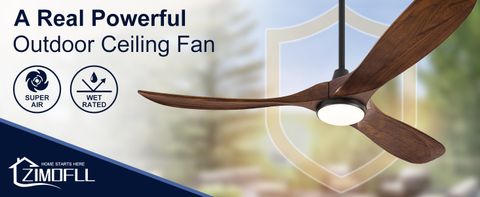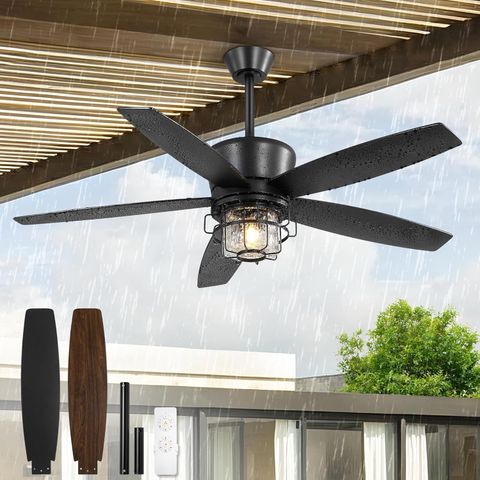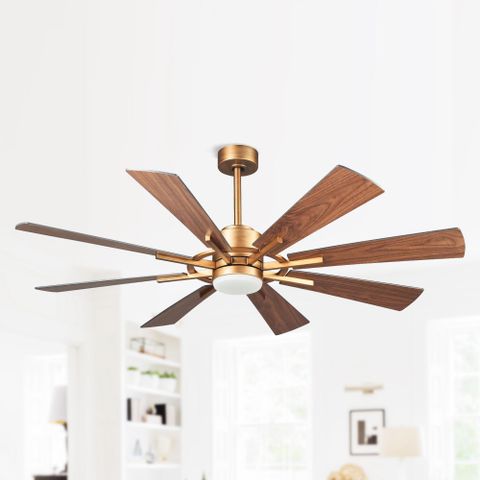Picture this: you’re sitting on your porch, sipping lemonade, feeling the gentle breeze dance across your skin. No air conditioning humming, no electric bill climbing higher than a summer temperature. That’s the magic of DC motor fans. These remarkable devices offer a smarter way to stay comfortable outdoors while keeping your wallet happy.
Summer heat can turn a peaceful backyard into a sauna, especially when you’re trying to enjoy the great outdoors. Traditional cooling methods often mean cranking up your AC or dealing with high electricity bills. But there’s another approach that’s gaining popularity among homeowners and outdoor enthusiasts alike. DC motor fans represent a game-changing solution that combines efficiency with comfort. These fans aren’t just about spinning blades; they’re about redefining how we think about outdoor cooling. What if you could maintain a pleasant outdoor environment without the hefty price tag? The answer might be right in your backyard, hidden in the quiet hum of a DC motor fan.
Understanding DC Motor Fan Technology
DC motor fans work differently than their AC counterparts. Instead of relying on traditional alternating current motors, they utilize direct current technology that’s more efficient and responsive. The key advantage lies in their ability to adjust speed precisely based on demand. When you’re just sitting around, the fan runs at a lower speed, consuming minimal power. But when the sun beats down harder or you need more airflow, it ramps up quickly. This smart response means you’re not wasting energy on constant high-speed operation.
The technology behind DC fans is surprisingly elegant. They use electronic speed controls that communicate directly with the motor, allowing for seamless adjustments. Unlike older fans that might have limited speed settings, DC fans can operate at thousands of different speeds. Imagine having a fan that responds to your every breath, adjusting its pace to match your comfort needs perfectly. It’s like having a personal assistant who knows exactly when you need more air and when you’re fine with a gentle whisper.
Energy Efficiency Advantages
When it comes to energy consumption, DC fans are absolute champions. A typical DC fan uses less than half the power of a standard AC fan. For instance, while a traditional fan might consume 60 watts, a DC model could run on just 15 watts at maximum speed. That’s a massive difference when you consider that fans might run for several hours during hot summer days.
Consider this scenario: if you run a 60-watt fan for 8 hours daily, you’re using 480 watt-hours per day. That translates to about 14 kilowatt-hours monthly. Now compare that to a 15-watt DC fan running the same schedule – just 3.5 kilowatt-hours. That’s nearly four times less energy usage. Over a season, those savings add up significantly. The math alone speaks volumes about why DC fans are becoming the preferred choice for energy-conscious consumers.
But it’s not just about the numbers. The efficiency also means less heat generation. Traditional fans produce more heat due to inefficiencies in their motor systems. DC fans, however, remain cooler to the touch and generate less waste heat. This creates a more comfortable environment overall, especially during peak afternoon hours when temperatures soar.
Cost-Effective Installation Options
One of the most appealing aspects of DC motor fans is their versatility in installation. Whether you’re setting up a patio area, creating a garden oasis, or building a covered veranda, DC fans offer multiple mounting solutions. You can choose from ceiling-mounted units, wall brackets, or even freestanding models that don’t require any permanent installation.
For those looking to retrofit existing spaces, many DC fans come with universal mounting hardware. This means you can upgrade your current setup without major construction work. The installation process is straightforward enough that most homeowners can handle it themselves, saving on labor costs. Many manufacturers provide detailed guides and video tutorials to walk you through each step.
Budget considerations vary widely depending on the size and features of the fan. Basic models start around $50, while premium options with smart controls and LED lighting can reach $200. However, the return on investment typically happens within a few months through reduced electricity bills. Consider the cost of a single AC unit versus a few DC fans – the latter often provides better value for money, especially in smaller spaces.
Smart Features and Connectivity
Modern DC fans go beyond simple rotation. Many incorporate smart technology that makes them even more efficient and user-friendly. Some models feature automatic sensors that detect occupancy or ambient temperature changes. When you approach your outdoor space, the fan kicks on automatically. If no one is around, it powers down to conserve energy.
WiFi connectivity opens up possibilities that were unimaginable just a few years ago. You can control your outdoor fans from anywhere using your smartphone. Want to turn on the fan before you arrive home? No problem. Need to adjust settings while relaxing in the garden? Easy peasy. Some systems even integrate with home automation platforms, allowing you to set schedules or trigger actions based on weather conditions.
Temperature monitoring is another smart feature. These fans can track environmental conditions and adjust their performance accordingly. During cooler evening hours, they might slow down to maintain comfort without excessive energy use. In the heat of the day, they ramp up to provide maximum relief. It’s almost like having a climate-controlled environment that adapts to changing conditions naturally.
Maintenance and Longevity Benefits
DC motor fans generally require less maintenance than traditional alternatives. Their electronic components are designed to last longer, reducing the frequency of replacements. Most manufacturers offer warranties ranging from 2 to 5 years, which reflects confidence in their durability.
The reduced wear and tear on components means fewer breakdowns and lower repair costs over time. Unlike AC motors that may require professional servicing, DC fans often run smoothly for years with minimal attention. Regular cleaning of the blades and housing is usually sufficient to keep them performing optimally.
Many DC fans also feature self-diagnostic capabilities that alert users to potential issues before they become serious problems. This proactive approach helps prevent unexpected failures and ensures consistent performance throughout the season. Think of it as having a health checkup for your outdoor cooling system, catching small problems before they turn into big headaches.
Practical Applications and Real-World Examples
Real-world usage shows how DC fans excel in various outdoor scenarios. In commercial settings, restaurants and cafes use them to create comfortable dining areas without expensive HVAC systems. A popular restaurant in Phoenix installed DC fans throughout their outdoor seating area and reported a 60% reduction in their cooling-related energy costs.
Residential applications are equally impressive. Homeowners in Texas have transformed their backyards into year-round living spaces by strategically placing DC fans in different zones. One family in Austin used three DC fans in their covered patio area, each controlling different sections. They found that the system provided excellent comfort while using less electricity than their previous central AC setup.
Garden enthusiasts also benefit from DC fans. Vegetable gardens and greenhouses can be kept at optimal temperatures using these efficient cooling solutions. The controlled airflow helps prevent overheating during hot weather, ensuring plants thrive even when outdoor conditions become challenging.
The combination of energy efficiency, smart features, and practical benefits makes DC motor fans an excellent choice for anyone looking to enhance their outdoor experience while managing costs. These fans represent more than just a way to stay cool; they’re a smarter approach to outdoor living that respects both your comfort and your budget. Whether you’re planning a new outdoor space or upgrading existing areas, DC fans offer a compelling solution that delivers results without the usual trade-offs. The investment pays dividends not just in comfort, but in reduced energy consumption and lower long-term costs. As technology continues to evolve, these fans will likely become even more sophisticated and affordable. For now, they stand as a testament to how innovation can make our daily lives more comfortable and sustainable. So next time you’re planning an outdoor project, consider what a few well-placed DC fans could do for your space. You might be surprised by how much difference they can make in both comfort and cost savings.














